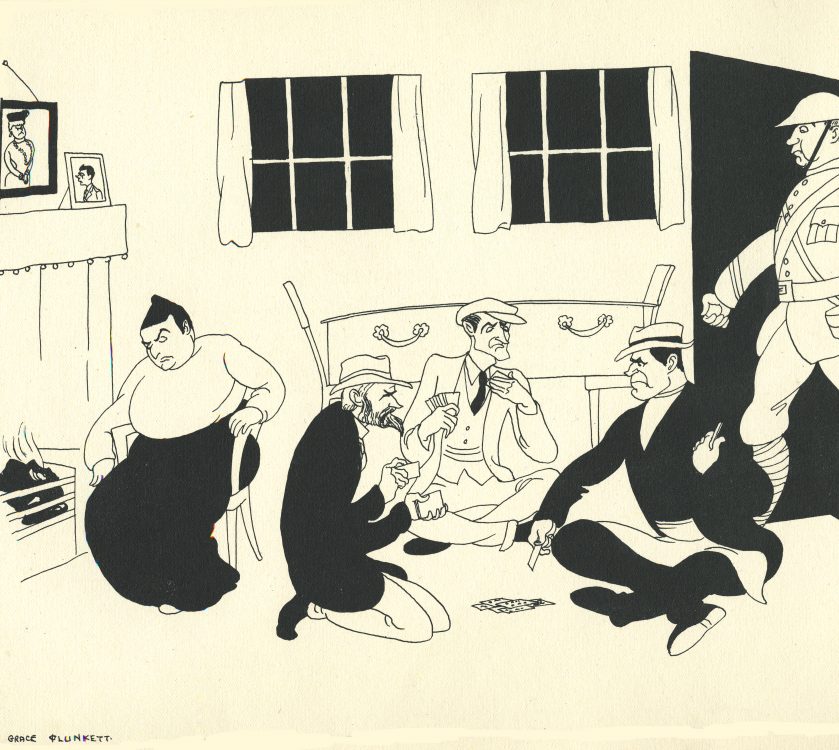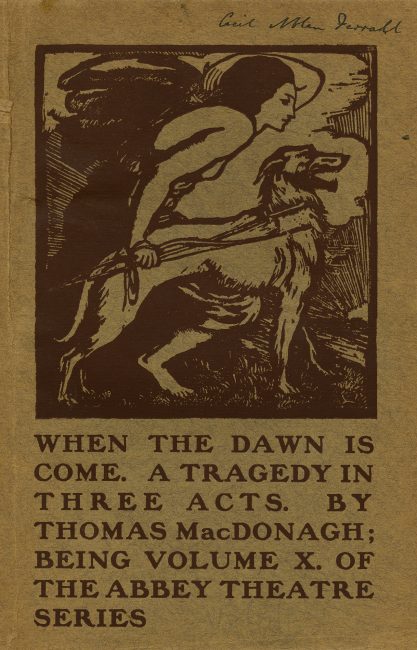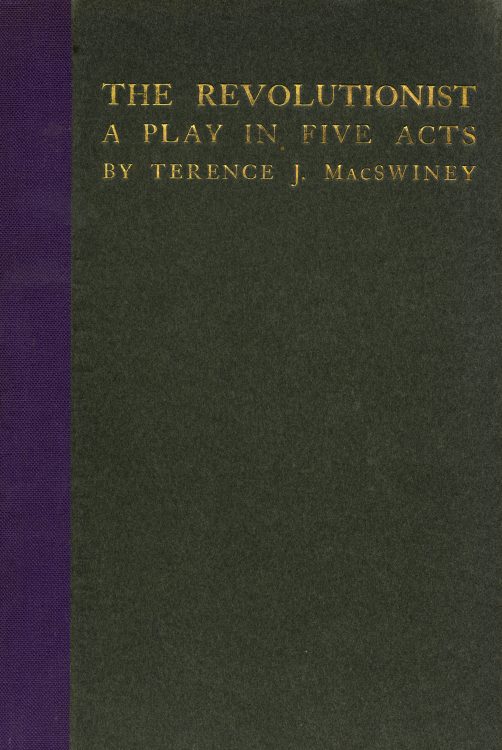Lennox Robinson’s history of the Abbey was fortunately already at press when a fire destroyed the theatre in 1951. As a director, playwright, producer, and its longtime manager, Robinson was intimately involved with the inner workings of the Abbey and its luminaries. He notes the connections the Abbey had to the Rising, including producing Thomas MacDonagh’s 1908 When the Dawn is Come and Terence MacSwiney’s The Revolutionist (1921) and investigating the legend that the press on which the 1916 Proclamation had been printed was somewhere hidden in the Abbey (it was not, at least that Robinson could uncover). Actor Arthur Shields (1896-1970) was scheduled to perform in Yeats’s Cathleen ni Houlihan on Easter Monday, “but going to work at the Theatre, found he had to shoulder a rifle and take up his post in the Post Office, and from there proceed to an internment camp in Wales” (Frongoch).
A plaque commemorating the 50th anniversary of the Rising was placed at the Abbey in 1966, listing those associated with the Abbey who participated in the Rising
Plunkett, Grace Vandeleur. Doctors recommend it: an Abbey Theatre tonic in 12 doses. Dublin: Printed for the subscribers by Colm O Lochlainn, 1930.
1 of 500 copies
Nationalist artist Grace Vandeleur Gifford (1888-1955) was a member of the Gaelic League and the Inghinidhe na hEireann (Daughters of Ireland), despite her parents’ pro-union stance. She published her cartoons and illustrations in various nationalist magazines, including The Shanachie. She married Joseph Mary Plunkett in Kilmainham Gaol’s chapel just hours before his execution in 1916. The marriage was widely reported on and helped to garner support and sympathy for the rebels. She herself became a very public figure as a widow of one of the sixteen men executed. During the Irish Civil War, Grace Plunkett became a republican spokesperson and was imprisoned in Kilmainham for several months, where she wrote a biography of her husband, painted her cell walls, and led a commemoration of the Rising. She illustrated campaign posters for Eamon de Valera, who, when elected to the Irish parliament in 1932, granted her a Civil List pension. She was buried with full military honors.
MacDonagh, Thomas. When the dawn is come. Dublin: Maunsel and Co., 1908.
Thomas MacDonagh was trained as a teacher, and helped found St. Edna’s with Padraig Pearse. MacDonagh joined the Irish Volunteers in 1913, became a member of the provisional committee, took part in the Howth gun-running operation in 1914, when, in response to the Ulster Volunteer Force’s Larne gun-running, the Irish Volunteers in the south obtained guns and ammunition from Germany. These arms were used during the Easter Rising. MacDonagh was a member of the IRB but not intimately involved in planning of the Rising. He was in charge of Jacob’s Biscuit Factory on Bishop Street during the Rising and was one of the fifteen executed by firing squad at Kilmainham Gaol in May 1916.
MacSwiney, Terence. The revolutionist: a play in five acts. Dublin, London, Maunsel and Company Ltd., 1914.
In 1920, Terence MacSwiney (1879-1920) became Sinn Féin Lord Mayor of Cork during the War of Independence after the Royal Irish Constabulary murdered Tomás MacCurtain. MacSwiney was charged with sedition after a raid and imprisoned in Brixton Prison. He died after a 74-day hunger strike. The press coverage attracted international attention and boycotting of British goods in the United States. The Revolutionist is MacSwiney’s best known play. It was produced by the Abbey in 1921, thirteen years after it was written. Lennox Robinson notes in his history of the Abbey that it was prophetic in foreshadowing MacSwiney’s “own noble, tragic death.”




